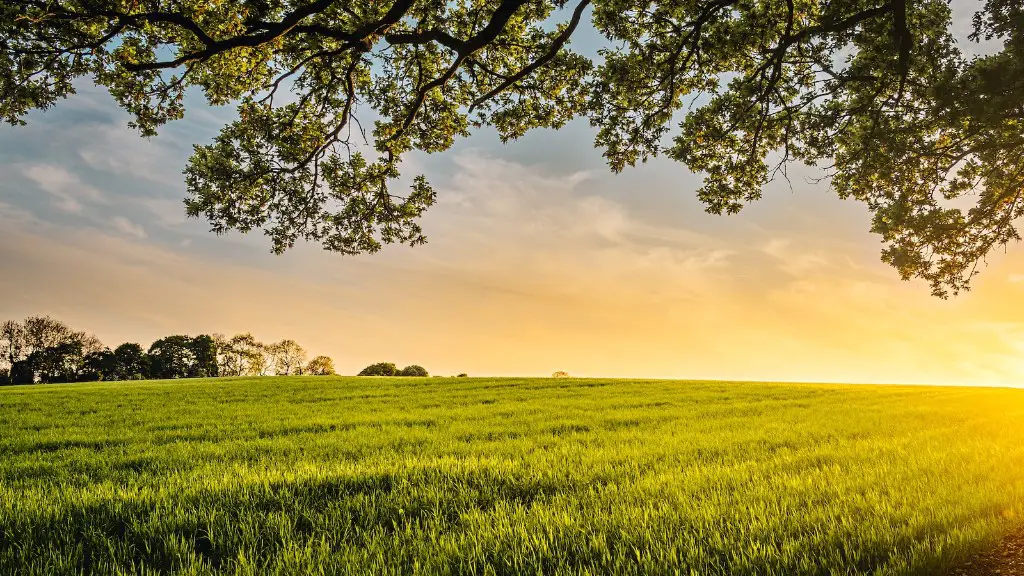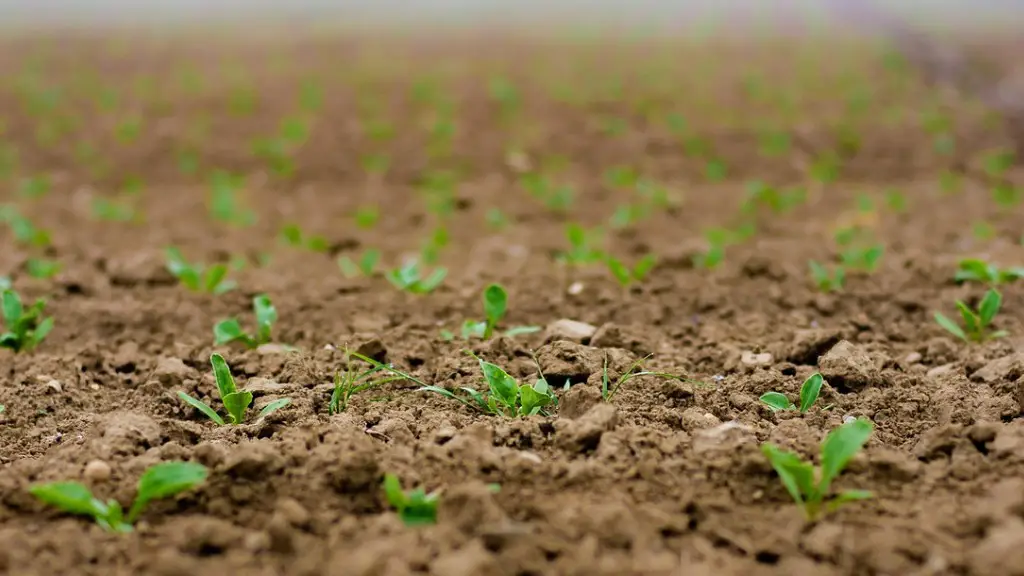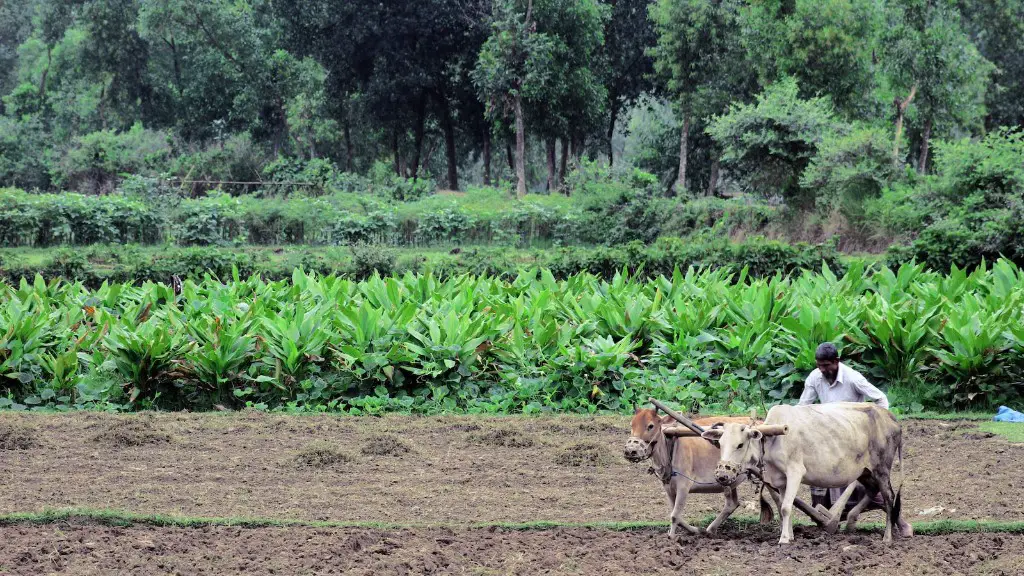Slash and burn agriculture is a form of subsistence farming that is used in areas where arable land is scarce and farmable land is too small to make food production from conventional farming methods viable. This type of farming is characterized by the felling of trees and vegetation, as well as the setting of fire to the cleared land. The burned vegetation releases nutrients into the soil, which in turn helps to increase crop yields. This form of agriculture has been around for thousands of years and is still practiced in numerous parts of the world today.
Slash and burn agriculture is a relatively simple agricultural method that doesn’t require special tools or a great deal of infrastructure. It is usually practiced by smallholder farmers and has become a mainstay of traditional subsistence farming in parts of the developing world. This technique is often adopted in times of crisis, as a means of sustenance amid economic adversity.
Slash and burn agriculture is not without its drawbacks. The most notable of these is the destruction of natural resources, such as biodiversity, forests and soil fertility. These may not be recovered for decades, leading to further loss of crops and poverty. Fire burns off essential nutrients in the soil, which can deplete the fertility of land over time and lead to soil erosion. As such, this form of farming can only be used in select situations and is not a long-term solution to the problems that subsistence farming communities may face.
In order to ensure its sustainability, Slash and burn agriculture must be implemented with caution and with a long-term vision. A key to this is crop rotation, which has the dual benefit of providing food and restoring soil fertility. Appropriate crop rotations should be practised in order to maintain the health of the land and ensure the continued ability to produce food. Governments should also support small-scale farmers with initiatives that enable them to access technology, credit, insurance and labour.
Class 10 students should understand the pros and cons of Slash and burn agriculture and realize it cannot be a long-term solution for food security. It is crucial for them to be aware of the importance of sustainability and the need for governments to support small-scale farming communities through the provision of resources and initiatives.
The Challenges of Slash and Burn Agriculture
Slash and burn agriculture is a widespread yet highly unsustainable agriculture practice that carries several risks for the environment, local communities and economies. Its impacts are felt more severely in regions with a high prevalence of subsistence agriculture, where smallholder farmers possess limited land and are reliant on the resources of the local environment. Common challenges associated with this form of agriculture include
- Resource depletion and land deterioration
- Air and water pollution, increased carbon emissions
- Populations and communities which lack access to or suffer from poor agricultural services
- Deforestation and species habitat destruction
In areas with a high prevalence of subsistence farming, this form of agriculture may provide a short-term solution for food security and improved income for smallholder farmers. Yet in the longer term, such a solution is not sustainable and is more likely to lead to further resource depletion and poverty.
The Prevalence of Slash and Burn Agriculture
Slash and burn agriculture is a form of traditional subsistence farming that is used predominantly in areas where arable land is scarce. Such agriculture practices can be found in parts of Africa, Asia, Latin America and the Caribbean. Globally, it is estimated that 12% of subsistence crop lands are planted using this technique. In some areas, this figure rises to 90%. The prevalence of this practice is largely due to its simplicity and lack of need for special tools or infrastructure, as well as its short-term viability in times of crisis.
Preventing Degradation with Slash and Burn Agriculture
Several strategies exist to ensure that Slash and burn agriculture is employed in an effective and sustainable way. These include the enforcement of stricter regulations on the clearing of vegetation and burning of land, as well as the promotion of crop rotation as a means of restoring soil fertility. Governments must also support smallholder farmers with initiatives that provide access to technology, credit and insurance.
In addition to these measures, efforts must be made to improve yield productivity, such as through the provision of improved seed varieties and fertilizer. Subsistence farmers must also be educated about the advantages of sustainable farming practices and the need for careful land management. When implemented with caution, Slash and burn agriculture can contribute to sustainable development and decreased poverty in certain regions.
The Impact of Slash and Burn Agriculture
The effects of Slash and burn agriculture vary greatly depending on where it is employed and the particular circumstances of the local community. In the short-term, this form of subsistence farming is capable of increasing crop yields and enhancing the livelihoods of smallholder farmers. In the long-term however, complications such as soil infertility, soil erosion and air and water pollution can negatively impact the environment and render it incapable of producing food.
In order to minimise its impact, sustainable agriculture practices must be implemented to ensure that land is managed responsibly and the environment is better protected. Governments must also implement initiatives that improve the yield productivity of subsistence farming and develop policies that enhance food security and promote economic stability.
The Benefits of Slash and Burn Agriculture
Slash and burn agriculture is capable of providing a number of benefits for subsistence farmers, particularly in cases of economic adversity. This form of farming is relatively easy to implement and does not require special tools or infrastructure. In times of crisis, it can provide a means of sustenance and improved income. Additionally, it can increase the land fertility and crop yields, thereby helping to feed a large population with limited resources.
In order to maximise the benefits of Slash and burn agriculture, sustainable solutions must be put in place that take into account the long-term impact of land use and resource depletion. Such measures include improved seed varieties, fertilizer and appropriate crop rotations. Government interventions should also focus on providing smallholder farmers with access to resources such as technology, labour and credit.



